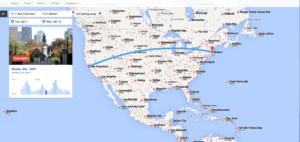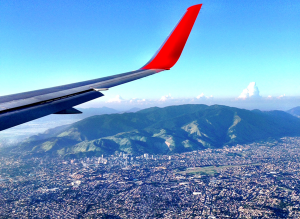I think no matter what country you live in or are going to visit you should have at least some understanding of the recent history, events and people who have shaped the society into what it is today. I have been holding back for awhile now about writing anything political, economic or social about Argentina or Buenos Aires because I still don’t think I know all the details for me to be a credible source.
Anyway, we get the Wine Republic Magazine at Buller and I was skimming through it the other night as I’m planning for Mendoza and came across a great article. WR writer, Eric Osborne gives a solid 1 page description of the last 20 years of chaos in Argentina around the Argentine economic collapse of 2001. It’s a must read for anyone who lives on this planet and has a fundamental desire to learn about the world. For those interested in South America and Argentina especially, it is a necessary read because those events still permeate everyday life here in Buenos Aires. From trust issues to inflation and uncertainty, the past has definitely cast a shadow over the present.
I’m not going to try to re-write the article, Osborne did a great job of providing a general background of how everything went down so here it is. Below are some direct passages from the article. If you prefer, you can read the full article here. Also, if you want to just read the bolded words it will give you some cool things to say at parties to make you sound smart.
Origins
The origins of Argentina’s economic crisis go back to the mid 1970’s to early 1980’s, when Argentina’s militant government acquired large amounts of debt with botched projects, corrupt political dealings,the Falklands War, and the state’s assumption of private entities. By the time democracy was restored in 1983, unemployment was skyrocketing, wages were dropping, and inflation was on the rise. Argentina simply didn’t have the means or adequate leadership to recover, and in 1989, with a declining gross domestic product (GDP) and inflation in excess of 5,000%, the economy collapsed.
Stabilization of the Peso
Starting in 1989, new president Carlos Menem took the country in a different direction by introducing a gamut of new economic policies, the most significant of which was the fixing of the peso to the US dollar at a rate of one to one. In doing so, Menem hoped to ease the minds of international lenders who had been disenfranchised by their currency’s hyperinflation, and who had begun to reject pesos as payment.
Initially, it appeared as though this would be a successful endeavor, as the economy began to stablize and inflation immediately came to a halt. Also, as Argentines now effectively held dollars, they could afford to travel abroad, buy imported goods, and had access to credit at low rates for the first time ever. As a result, quality of life skyrocketed.
Inversely, with the low foreign exchange price, importers (both private and public) had an artificial inducement to buy. And buy they did. From 1990 to 1994, firms and consumers trippled the amount of imported capital goods they purchased; and from 1992 to 1999, Argentina amassed over $22 billion debt on imported capital alone. The effects were felt throughout the economy.
Still, the government was reluctant to abandon the peg, and instead opted to tighten macroeconomic policy by reducing spending, increasing interest rates, and increasing taxes. The hope was that if they could hold out long enough, the peso would actually become undervalued, meaning the peso would increase in value when the peg was removed, thereby giving a further boost to price stability. This, however, would never happen; and when Argentina finally defaulted on its debt in December 2001, the $155 billion they left on the table was the largest sovereign debt default in history.
The End of Convertibility
In January 2002, the one to one dollar peg was finally abandoned. In a matter of days, the peso lost significant value in the unregulated market, officially dropping to 1.4 pesos per dollar. This would usually suggest an increase in exports, but since the county was structured for an import heavy market, export income came slowly. Accordingly, the value of the peso continued to drop, bottoming out at approximately 4 pesos to 1 dollar. Export sluggishness also reduced tariff revenue and government saving, which caused inflation to rise significantly, reaching 20.2% in April 2002.
To avoid a run on the banks, the government proceeded to put a cap on withdrawals, which meant residents had no means of buying necessities.
The Ministry of Economy required all bank accounts denominated in dollars to be exchanged into pesos at the official rate. Effectively, this meant that people’s savings were cut by 75% overnight. Nationwide, wealth plummeted, businesses closed, imported products became virtually inaccessible, and the unemployment rate soared to nearly 25%.
Efforts to Fix the Problem
In response to these issues, the government began to promote their exports with subsidies and improved access to credit for export related industries. They’ve had some success too. Behind skyrocketing soy prices, Argentine exports eventually began to gain footing in international markets. In fact, between 2003 and 2008, Argentina has managed to amass a $77 billion trade surplus.
If the past is any indication of the future here in Argentina I don’t think this will be the end to their economic problems, but as for now, things seem to be rather steady… although inflation is increasing quite a bit… I guess we’ll see what happens.
Kudos Eric Osborne, Read Full Article @ www.wine-republic.com
















One Response
Very odd country Argentina. Very arrogant sonetimes but always pessimistic and down on itself in many ways.